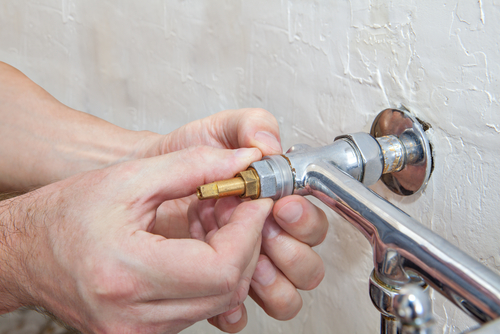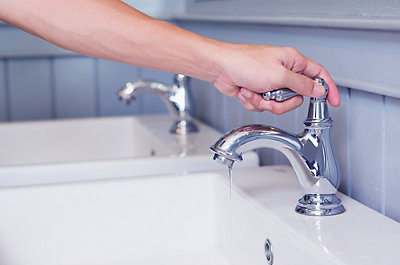How It's Significant to Fix a Faulty Faucet
How It's Significant to Fix a Faulty Faucet
Blog Article
Were you in search of information and facts concerning How to Fix a Dripping or Leaky Faucet ?

Trickling taps may look like a minor hassle, however their effect surpasses just the nuisance of the sound. From wasting water to incurring unnecessary economic costs and health threats, disregarding a trickling tap can result in various effects. In this article, we'll look into why it's critical to resolve this usual home issue immediately and successfully.
Waste of Water
Ecological Influence
Trickling faucets contribute dramatically to water wastage. According to the Environmental Protection Agency (EPA), a single tap trickling at one drip per secondly can throw away greater than 3,000 gallons of water annually. This not only strains water resources but also affects communities and wildlife dependent on them.
Financial Expenses
Enhanced Water Costs
Beyond the environmental effect, dripping taps can pump up water bills considerably. The collected wastage gradually translates right into higher utility expenditures, which might have been avoided with prompt repairs.
Prospective Home Damages
Furthermore, long term dripping can bring about harm to fixtures and surfaces bordering the tap. Water build-up can cause discoloration, deterioration, and even architectural concerns if left ignored, causing additional repair expenses.
Health and wellness Issues
Mold and Mildew Growth
The continuous visibility of dampness from a trickling tap develops an ideal setting for mold and mildew and mildew development. These fungis not only endanger indoor air high quality yet likewise present health dangers, specifically for individuals with respiratory system conditions or allergies.
Waterborne Illness
Stationary water in trickling taps can become a breeding ground for bacteria and other microorganisms, boosting the threat of waterborne diseases. Contaminants such as Legionella microorganisms prosper in stagnant water, potentially leading to significant health problems when ingested or inhaled.
Do it yourself vs. Professional Repair work
Advantages and disadvantages of DIY Repair Service
While some may try to repair a dripping tap themselves, DIY repair services come with their very own set of obstacles. Without proper expertise and tools, DIY efforts can exacerbate the problem or bring about incomplete repair services, lengthening the problem.
Benefits of Working With a Professional Plumber
Employing an expert plumber makes certain that the underlying cause of the dripping faucet is dealt with successfully. Plumbing professionals have the proficiency and equipment to diagnose and repair faucet issues efficiently, saving time and decreasing the threat of more damages.
Step-by-Step Guide to Repairing a Dripping Faucet
Tools Required
Prior to attempting to take care of a dripping tap, collect the essential devices, including an adjustable wrench, screwdrivers, substitute parts (such as washers or cartridges), and plumber's tape.
Common Faucet Issues and Their Solutions
Determine the type of faucet and the specific concern triggering the drip. Common problems include damaged washing machines, rusty shutoff seats, or defective O-rings. Refer to maker instructions or on the internet tutorials for detailed assistance on fixings.
Preventive Measures
Routine Upkeep Tips
To prevent leaking taps, execute regular maintenance such as cleansing aerators, inspecting for leaks, and replacing worn-out components without delay. In addition, consider installing water-saving devices or upgrading to more reliable components.
Relevance of Prompt Repair Works
Attending to leaking faucets as soon as they're noticed prevents more water wastefulness and prospective damage, inevitably conserving both water and money in the long run.
Effect On Building Worth
Perception of Well-Maintained Property
Preserving a residential property in good condition, including resolving maintenance concerns like dripping taps, improves its regarded value and charm amongst potential customers or tenants.
Influence on Resale Worth
Characteristics with well-kept plumbing components, including taps, command greater resale worths in the realty market. Dealing with dripping taps can add to a positive impact throughout home assessments and arrangements.
Ecological Duty
Specific Payment to Preservation
Taking obligation for taking care of dripping taps aligns with wider efforts towards water preservation and ecological sustainability. Every individual's actions jointly make a substantial effect on preserving priceless sources.
Sustainable Living Practices
By focusing on prompt fixings and embracing water-saving habits, people contribute to lasting living practices that benefit both existing and future generations.
Final thought
Addressing a leaking tap exceeds plain convenience; it's an essential step towards preserving water, decreasing monetary prices, and safeguarding health and wellness and building. Whether via do it yourself repair work or expert help, doing something about it to fix dripping faucets is a small yet impactful way to promote responsible stewardship of resources and add to a much healthier, extra lasting future.
How to Fix a Leaky Faucet: Step-by-Step Repair Guide
A leaky faucet may seem like a simple annoyance, but if it's not fixed promptly, that leak could cost hundreds to potentially thousands. From water damage to mold, mildew, and high water bills, even a tiny leak can be catastrophic if left unattended. Damage like this can even affect the overall value of your home, so it's important to take the right approach for leaky faucet repair. You may need the help of a plumber in some cases, but we've got a few tips you can try on how to fix a leaky faucet before calling the pros.
Four Faucet Types
When you're learning how to fix a leaky faucet, the first step is knowing what kind of faucet you're working with! There are four common types.
Cartridge Faucets
Cartridge faucets come in one- or two-handled varieties. In one-handled cartridge faucets, hot and cold water combines in a single cartridge. In the two-handled versions, hot and cold water are controlled separately and mixed in the faucet.
Ball Faucets
Ball faucets have a single lever you push up and down to adjust the pressure and rotate to change the temperature. A slotted metal ball controls the amount of water allowed into the spout.
Compression Washer Faucets
They're the oldest type of faucet, but they're still used in many homes — especially older ones. Compression faucets have two separate handles that, when turned, raise or lower the washer that seals a water valve. This valve stops water from flowing through the faucet when it is turned off.
Disc Faucets
Disc faucets rarely need to be repaired due to their maintenance-free design. The water flow is controlled by two discs — the upper one raises and lowers against a fixed lower disc, creating a watertight seal. If your disc faucet starts leaking, you may need to replace the seals or clean residue buildup from the inlets.
Fixing a Leaky Faucet
Step 1: Turn Off the Water
Whether you're learning how to fix a leaky bathtub faucet or how to fix a leaky kitchen faucet, always turn off the water supply to your working area when you're fixing a leak. The last thing you want is a flood added to your list of things to fix.
Look for the shutoff valves below your sink or around the tub and turn them clockwise to stop the water flow. If your faucet doesn't have shutoff valves, you may need to turn off the water for the whole house. Check to make sure it's off by turning the faucet on. If nothing comes out, you're ready to start the repair.
Step 2: Take Apart the Faucet
How you disassemble your faucet depends on the type of fixture you have. You can use a flathead screwdriver to remove the caps on top of the handle or handles for cartridge and compression faucets. Inside, you should see handle screws. Unscrew these with a screwdriver to remove the handle.
Disc- and ball-style faucets will typically have an inlet screw near the handle, and removing that will reveal the interior of the faucet.
Detach the Valve Stem
For cartridge- and compression-style faucets, you'll see the inner valve stem or cartridge once you remove the faucet handles. If you have a compression faucet, unscrew the brass valve stem. If you have a cartridge faucet, pull out the cartridge. If your cartridge has been in place for a while, it may require some tools or extra force to remove it due to mineral deposits.
Examine and Replace Parts
Once you've removed the parts, check them out to confirm what needs to be replaced. You may see corroded rubber washers, O-rings, stems, or cartridges. On a ball-style faucet, check the seats and springs for damage.
If you need to repair a leaky disc faucet, check the inlet and seals on the lower disc.
Once you determine what parts must be replaced, visit your local hardware store. Bring the damaged parts with you to ensure you can purchase the correct components to replace them.
Clean Valves and Faucet Cavity
If you've removed a stem or cartridge, you may notice mineral buildup in the faucet's threads. Use white vinegar to clean the valve seat by soaking it for a few minutes, then scrub it away with a soft toothbrush and rinse with warm water. You can also clean the interior of the faucet in the same way.
Reassemble the Faucet
Once your faucet is cleaned and the required parts have been replaced, it's time to reassemble it. Put the pieces back together and slowly turn the water supply back on. Doing this slowly is crucial because too much initial water pressure can damage the new hardware you've just installed.
https://homewarranty.firstam.com/blog/how-to-fix-leaky-faucet

Do you like more info about Water Dripping from Faucet: Why and How to Fix? Create a remark below. We'd be pleased to see your thoughts about this write-up. In hopes that you come back again soon. Do you know someone else who is interested by the niche? Why not promote it. I appreciate your readership.
Report this page